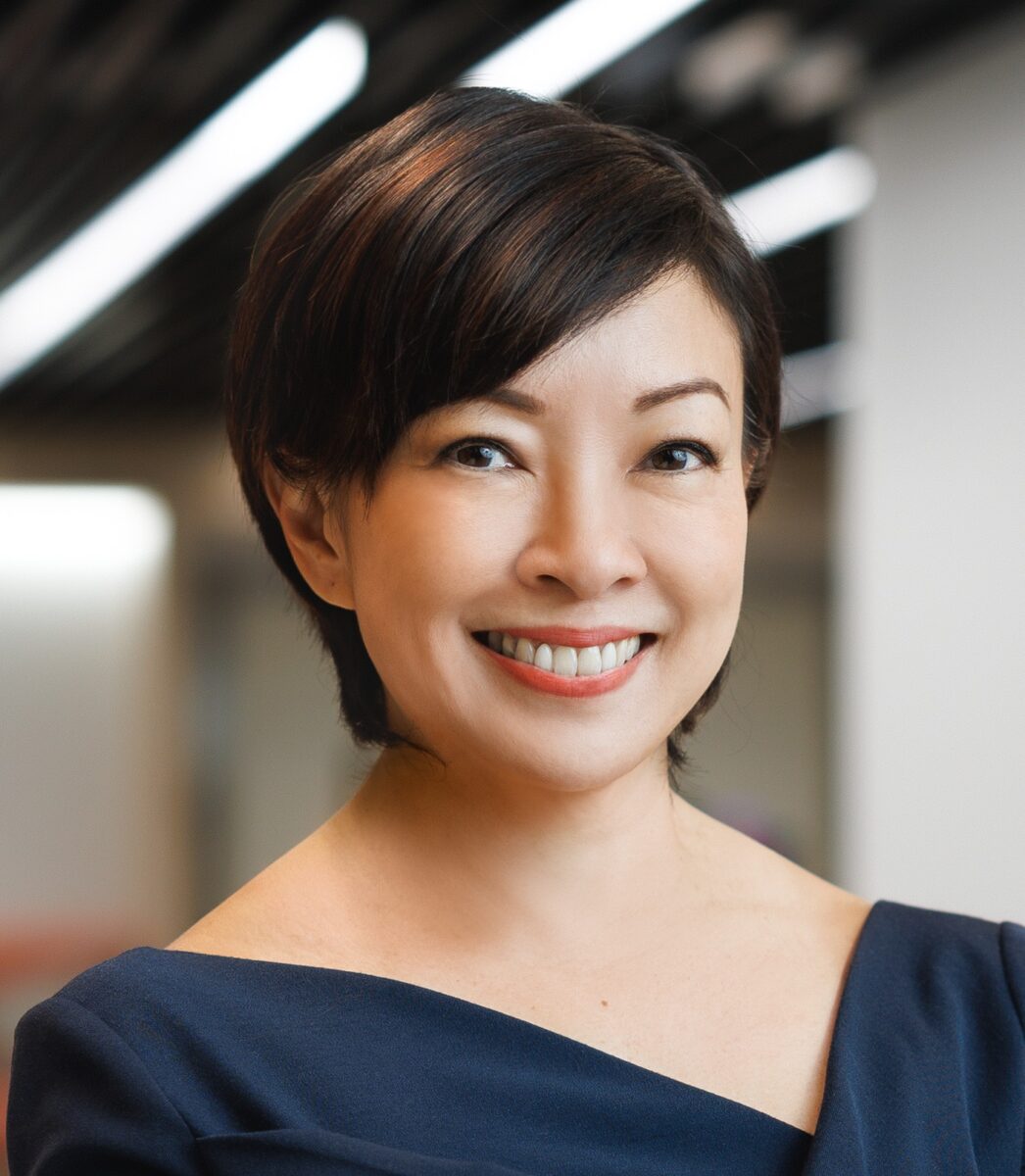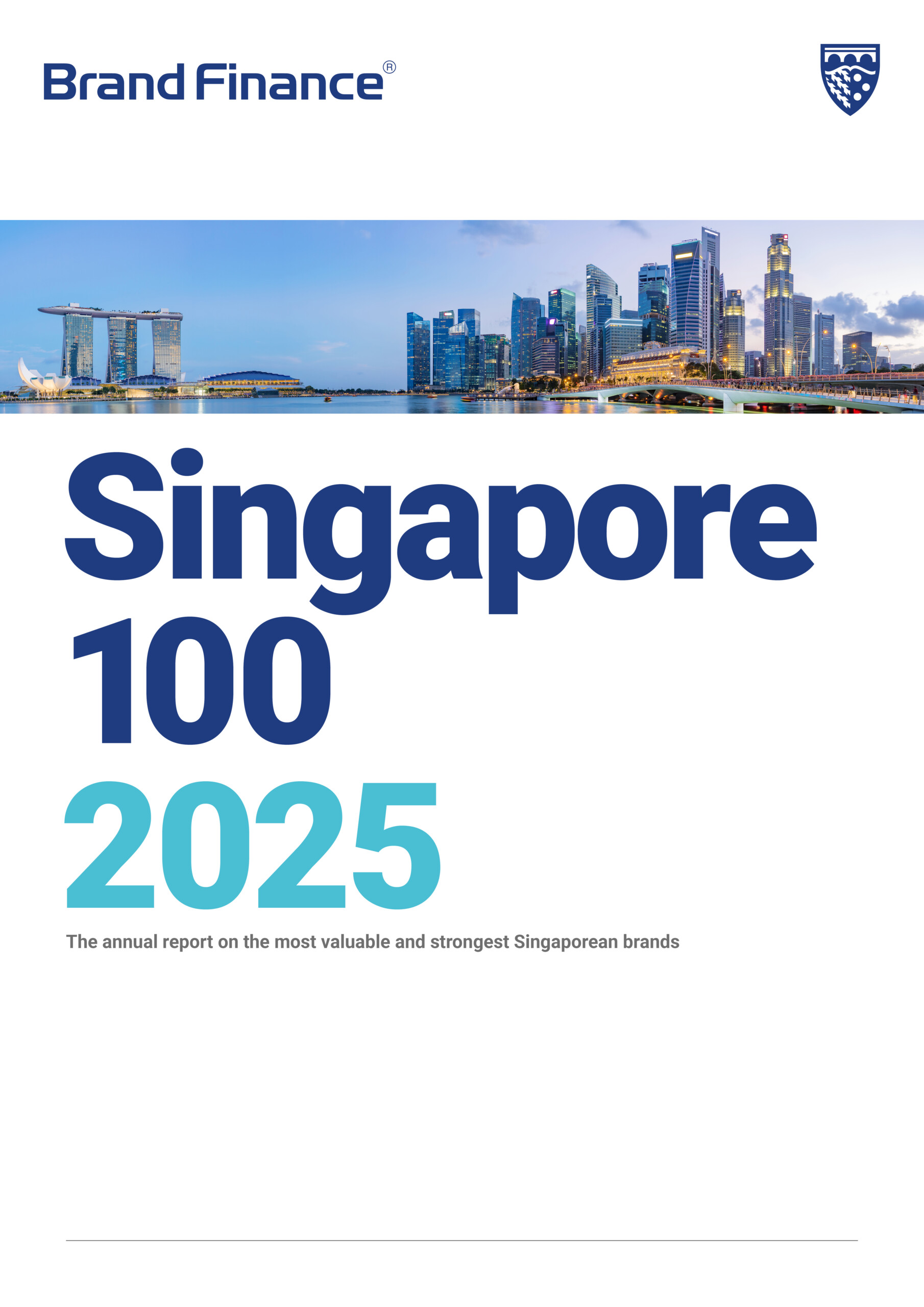This article was originally published in the Brand Finance Singapore 100 2025 report
Ranked as the 7th strongest telecoms brand globally, Singtel continues to solidify its position as a leader in digital connectivity and innovation. The brand’s value has grown by 2% to USD 4.1 billion, reinforcing its strength in a competitive global market.
Lian Pek, Vice President, Group Strategic Communications and Brand at Singtel, shares insights into the brand’s journey.
Interview with Lian Pek

Vice President,
Group Strategic
Communications
and Brand,
Singtel
Singtel manages a diverse portfolio of brands, including Optus, NCS, Nxera, that seem to operate independently of the Singtel brand identity. What is the strategic thinking behind maintaining these separate brand identities, and how does this approach support Singtel’s overall business objectives?
The Singtel Group is both a branded house and a house of brands. We started simply as the former - Singtel - the first and only telecoms company in Singapore back in the day. Over the years, as the company made strategic investments overseas to expand its telecoms footprint, it gained a presence across India, Indonesia, Thailand, the Philippines as well as Australia with the acquisition of our wholly-owned subsidiary Optus in 2001. Along the way, the opportunity to acquire NCS emerged and that’s become our ICT arm. Today, the Singtel Group includes the original business brand Singtel Singapore - which runs our connectivity business for both consumers and enterprises as well as other brands that have been added to the stable, for example, Nxera – our emerging data centre business.
The range of our brands reflects the growth of the Group and the depth of our business. Obviously, they are all highly synergistic and when any of our brands do well, the Group as a whole does well. In today’s uncertain macro-economic environment, this exposure to diverse markets and sectors is a distinct advantage
Collaboration and partnerships have become crucial elements in today’s interconnected world. What role have these partnerships played in driving innovation and brand value growth?
Being a telco and techco, we operate in a complex eco-system where partnerships are key. Two years ago, as cloud computing became increasingly crucial to enterprise digitalisation, we made a concerted move into the data centre sector with global investor KKR taking a 20% stake in our Nxera business for up to S$1.1 billion. Our decades-long expertise in running data centres locally and KKR’s global experience in the space made this partnership highly synergistic and compelling for business clients and shareholders given our shared ambition to scale the business regionally.
And we don’t necessarily have to be the lead partner to see innovation and brand value growth. For example, we may have a 40% stake in GXS-our digital banking joint venture with Grab-but our collective customer base and Grab’s digital native DNA is what gives the partnership its competitive edge.
As a company whose brand value has been built on our record of technological firsts, making breakthroughs with partners is also par for the course. After working with Ericsson to develop the world’s first 5G standalone network in Singapore in 2022, we went on to be the first to deploy 5G network slicing commercially with Taylor Swift’s Eras Tour becoming one of the first monetisation opportunities
for the technology.
By allocating dedicated mobile broadband bandwidth to the event, with high-speed data and guaranteed network quality, Swift’s devoted fanbase streamed her concert seamlessly and shared content on social media platforms with much success.
In 2024, we’ve witnessed rapid advancements in AI and 5G technology, transforming the telecommunications landscape and reshaping customer expectations. How has Singtel adapted to these developments to enhance customer experiences and drive greater operational efficiencies?
5G is a big leap forward in network infrastructure technology, without which emerging technologies like artificial intelligence, machine learning, robotics and even quantum computing cannot be exploited. This is why Singtel raced to achieve 5G nationwide coverage in 2022, three years ahead of regulatory targets, to position Singapore as a national sandbox for global innovation.
Since then, we’ve developed many new capabilities while drawing industry-leading global enterprises to Singapore to re-think and transform their businesses. From manufacturing electric vehicles and semiconductor chips to boosting the operational efficiency of our ports and homeland security, Singtel’s
5G is changing the digitalisation game with its high speeds, massive bandwidth, and low latency.
Armed with 5G, we’ve also taken the plunge into AI – both as a productivity and profit play. We’ve supercharged our network performance and developed platforms that support enterprise application
marketplaces, cloud management and more. All this has helped lower barriers to entry for enterprises keen
to leverage 5G and AI to scale their businesses.
We’ve also deployed AI in our customer engagement process, helping our customer care agents save time on repetitive tasks so they can focus more on connecting with customers and solving complex issues. At the heart of all this innovation is the intent to make things easier, faster, and better for all our stakeholders.
Singtel has made remarkable progress in advancing its ESG agenda, from accelerating net-zero targets to 2045 to being recognised as Asia’s most sustainable telecom provider. How have these initiatives influenced your operations and brand perception, and how do you plan to engage stakeholders—such as customers, employees, and partners—in achieving your ESG ambitions?
Our ESG agenda has definitely made us a stronger brand, one that goes beyond corporate vision and business goals to serve the larger purpose of empowering our communities with the technology and innovations that have become synonymous with Singtel. That said, it does take a village to achieve our collective ESG ambitions which is why engaging our customers, partners and employees across a slew of touchpoints is critical.
This ranges from forums where we encourage partners to be more forthcoming in their sustainability
disclosures, to brand campaigns that exhort the public, customers and non-customers alike, to share our support for the more vulnerable segments of our society, our national athletes, as well as the arts –be it our support for the National Gallery or the Esplanade through the Singtel Waterfront theatre. We recognise ESG must start from within, which means securing collective buy-in from Singtel staff who have a say in our ESG agenda and how we intend to advance it.
As you look ahead to 2025 and beyond, what are Singtel’s key strategic priorities, and what emerging
trends do you believe will shape your industry in Southeast Asia and globally?
Our key priority for 2025 and beyond is to build on the transformations that we’ve made in the past 3 years and keep leaning into the growth plan mapped out in our Singtel28 strategy. We intend to keep lifting business performance, capitalise on growth trends in data centres and AI to deliver sustained value realisation, while championing people and sustainability.
Besides data centres, AI is the obvious space to watch as it could prove game-changing in ways that have yet
to be seen. Recognising this opportunity, we recently launched RE:AI, an AI development and deployment
platform that combines state-of-the-art AI compute infrastructure with 5G or fixed networks.
This allows enterprises of all sizes to deploy, manage and scale AI applications without the overheads of complex infrastructure. When AI is this scalable and accessible, the implications for business and innovation
are tremendous and the impact on society and how we live even more exciting.

